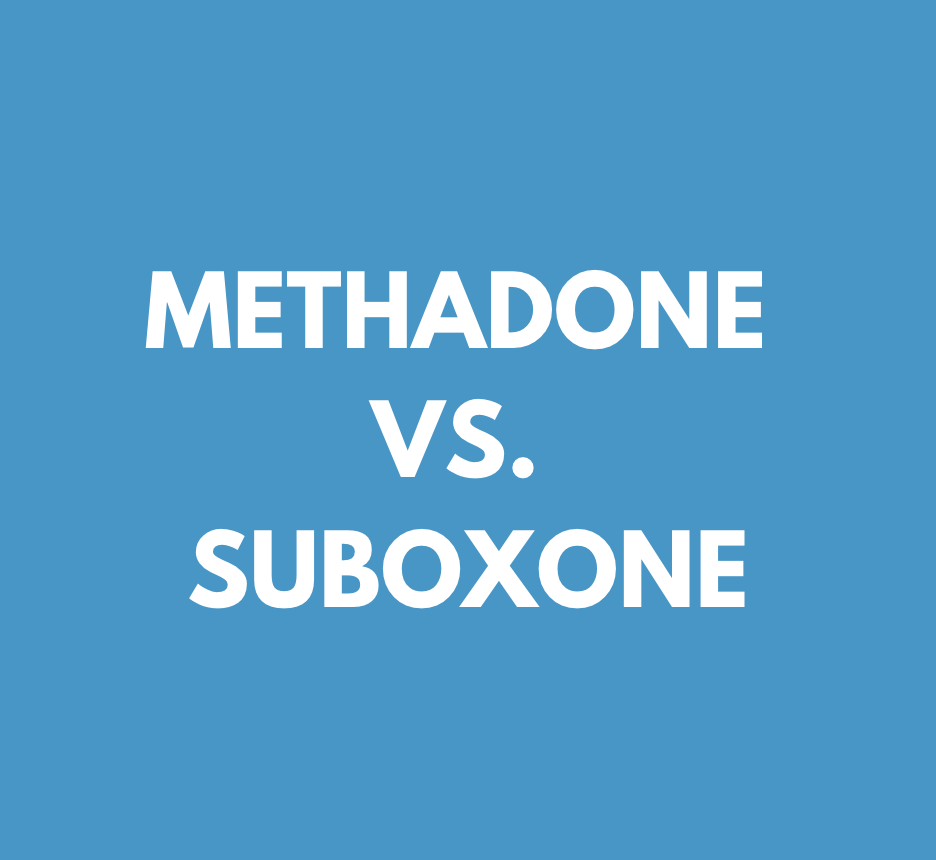Opioid addiction is a challenging and often overwhelming condition that affects millions of people across the United States, including many individuals in New Mexico. Overcoming opioid addiction requires a comprehensive treatment approach that addresses both the physical and psychological aspects of the disorder.
Medication-Assisted Treatment (MAT) has emerged as one of the most effective strategies for managing opioid addiction, and Methadone and Suboxone are two of the most commonly used medications in this approach. However, choosing the right medication depends on a variety of factors, including the severity of the addiction, the patient’s health history, and their personal preferences. In this blog, we’ll explore the differences between Methadone and Suboxone, the factors that influence the choice of medication, and how Renew Health tailors treatment to meet the unique needs of each patient.
Understanding Methadone: A Proven Option for Severe Addiction
Methadone is a full opioid agonist that has been used for over five decades to treat opioid addiction. As a full agonist, Methadone binds fully to the opioid receptors in the brain, mimicking the effects of opioids like heroin or prescription painkillers. This binding action helps to stabilize patients by reducing withdrawal symptoms and cravings, making it easier for them to focus on their recovery.
Who Might Benefit from Methadone?
- Patients with Long-Term or High-Dose Opioid Use: Methadone is particularly effective for individuals who have been using opioids for a long time or who have been taking high doses of opioids. Its ability to provide a consistent level of opioid stimulation helps prevent withdrawal symptoms and cravings, making it easier for these patients to maintain stability.
- Those Needing Intensive Monitoring and Support: Methadone is typically administered in a clinic setting, where patients receive their daily dose under the supervision of healthcare professionals. This structured environment provides additional support and accountability, which can be beneficial for individuals in the early stages of recovery or those at high risk of relapse.
- Patients Seeking Long-Term Maintenance: For some individuals, Methadone may be used as a long-term maintenance therapy. This approach allows patients to achieve stability in their lives while reducing the harmful effects of opioid use. Over time, patients may work with their healthcare provider to gradually reduce their Methadone dose or transition to a different treatment.
The Benefits of Methadone
- Effective at Reducing Withdrawal Symptoms: Methadone’s long half-life means it provides consistent relief from withdrawal symptoms, helping patients avoid the intense cravings and discomfort that often lead to relapse.
- Structured Treatment Environment: The requirement for daily clinic visits provides a routine and structure that can be beneficial for individuals who need a higher level of support in their recovery.
- Long History of Use: Methadone has been used for decades in the treatment of opioid addiction, and its effectiveness is well-documented in the medical literature.
Potential Drawbacks of Methadone
- Daily Clinic Visits: The need for daily visits to a Methadone clinic can be a barrier for some patients, particularly those who live in rural areas or have work or family commitments that make frequent travel difficult.
- Risk of Dependence: As a full opioid agonist, Methadone carries a risk of physical dependence, meaning that patients may experience withdrawal symptoms if they suddenly stop taking the medication. However, this risk is managed as part of a comprehensive treatment plan.
- Side Effects: Common side effects of Methadone include drowsiness, constipation, and sweating. In some cases, Methadone can cause more serious side effects, such as respiratory depression, which requires careful monitoring by healthcare providers.
Exploring Suboxone: A Flexible Option for Recovery
Suboxone is a combination of buprenorphine, a partial opioid agonist, and naloxone, an opioid antagonist. Unlike Methadone, buprenorphine only partially activates the opioid receptors in the brain, which means it provides relief from withdrawal symptoms and cravings without producing the same high as full agonists. Naloxone is included in Suboxone to prevent misuse, as it blocks the effects of opioids if the medication is tampered with or taken in a way other than prescribed.
Who Might Benefit from Suboxone?
- Patients with Moderate Opioid Addiction: Suboxone is often recommended for individuals with moderate opioid addiction, particularly those who have not been using opioids for a long time or who have been taking lower doses of opioids. Its partial agonist properties make it effective at managing withdrawal symptoms and cravings while reducing the risk of misuse.
- Those Seeking Greater Flexibility in Treatment: Unlike Methadone, which requires daily clinic visits, Suboxone can be prescribed by a doctor and taken at home. This makes it a more flexible option for individuals who have stable lives and strong support systems, as they can manage their treatment with greater independence.
- Patients Concerned About Dependence: Because buprenorphine is a partial agonist, it has a lower risk of dependence compared to Methadone. This makes Suboxone an attractive option for individuals who are concerned about the potential for physical dependence on their medication.
The Benefits of Suboxone
- Lower Risk of Abuse: Suboxone’s combination of buprenorphine and naloxone reduces the risk of misuse, making it a safer option for many patients. The naloxone component ensures that the medication cannot be easily abused, as it blocks the effects of opioids if the medication is taken improperly.
- Flexible Treatment Options: Suboxone’s flexibility allows patients to manage their treatment with greater independence. This is particularly beneficial for individuals who have work or family commitments that make daily clinic visits difficult.
- Effective at Reducing Withdrawal Symptoms: Like Methadone, Suboxone is effective at reducing withdrawal symptoms and cravings, helping patients stay focused on their recovery.
Potential Drawbacks of Suboxone
- Not Suitable for Severe Addiction: Suboxone may not be as effective as Methadone for individuals with severe opioid addiction or those who have been using high doses of opioids. In these cases, a stronger medication like Methadone may be needed to manage withdrawal symptoms and cravings.
- Risk of Precipitated Withdrawal: If taken too soon after using opioids, Suboxone can cause precipitated withdrawal, a sudden onset of withdrawal symptoms that can be distressing and uncomfortable. It’s important to follow the guidance of a healthcare provider when starting Suboxone.
- Side Effects: Common side effects of Suboxone include headache, nausea, and constipation. Some patients may also experience insomnia or anxiety. These side effects are generally mild and can be managed with the help of a healthcare provider.
How Renew Health Tailors Treatment to Individual Needs
At Renew Health, we understand that every patient’s recovery journey is unique. That’s why we take a personalized approach to treatment, working closely with each patient to determine the best MAT option for their needs. Our team of experienced healthcare providers conducts a thorough assessment to understand the patient’s addiction history, medical background, and treatment goals. We then develop a customized treatment plan that includes the appropriate medication, counseling, and support services.
The Importance of Comprehensive Care in MAT
While Methadone and Suboxone are powerful tools in the fight against opioid addiction, they are most effective when combined with counseling and behavioral therapies. At Renew Health, we offer a range of therapy options, including individual counseling, group therapy, and Cognitive Behavioral Therapy (CBT). These therapies help patients address the underlying issues that contribute to their addiction, develop coping strategies, and build a strong foundation for long-term recovery.
Monitoring and Adjusting Treatment
Recovery is a dynamic process, and treatment plans may need to be adjusted as patients progress in their journey. At Renew Health, we continuously monitor our patients’ progress and make adjustments to their treatment plans as needed. Whether it’s transitioning from Methadone to Suboxone, adjusting medication doses, or incorporating new therapy options, our goal is to provide the most effective and supportive care possible.
Conclusion
Choosing between Methadone and Suboxone is a critical decision in the treatment of opioid addiction, and it’s important to consider all the factors that can influence this choice. At Renew Health, we are committed to helping our patients make informed decisions about their treatment and providing the support they need to achieve lasting recovery. Whether you are considering Methadone, Suboxone, or another treatment option, our team is here to guide you every step of the way.


